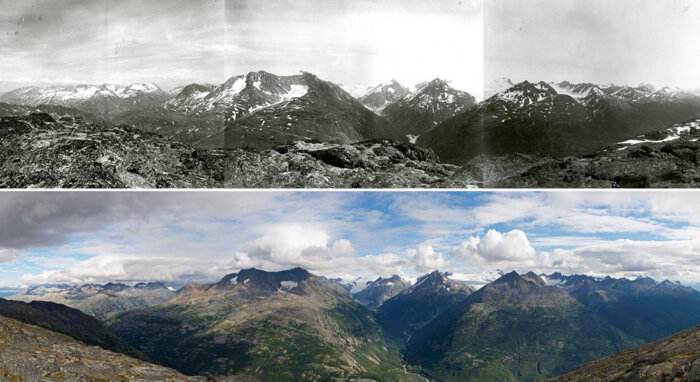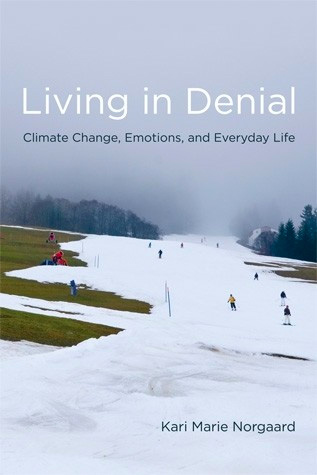Climate Change in the Age of Numbing

It was not long after my arrival in Bygdaby — a pseudonym I use for an actual rural community in western Norway — that I began to sense a paradox. Norwegians are among the most highly educated people in the world. Global warming was frequently mentioned during my time in Bygdaby, and community members seemed to be both informed and concerned about it. Yet at the same time it was an uncomfortable issue. People were aware that climate change could radically alter life within the next decades, yet they did not go about their days wondering what life would be like for their children, whether farming practices would change in Bygdaby, or whether their grandchildren would be able to ski on real snow. They spent their days thinking about more local, manageable topics.
Ingrid, a local high school student, described how “you have the knowledge, but you live in a completely different world.” Vigdis told me that she was afraid of global warming, but that it didn’t enter her everyday life: “I often get afraid, like — it goes very much up and down, then, with how much I think about it. But if I sit myself down and think about it, it could actually happen; I thought about how if this here continues, we could come to have no difference between winter and spring and summer, like — and lots of stuff about the ice that is melting and that there will be flooding, like, and that is depressing, the way I see it.”

In the words of one person who held his hands in front of his eyes as he spoke, “People want to protect themselves a bit.” These voices are echoed in the United States. One of my female environmental studies students described how “solving global warming seems like such a daunting task, and even I know that it can seem too overwhelming.” Another student observed, “Despite my knowledge of the wider climate issues, I am still living the same life.”
Community members in Bygdaby described this sense of knowing and not knowing, of having information but not thinking about it in their everyday lives. As one young woman told me, “In the everyday I don’t think so much about it, but I know that environmental protection is very important.” As a topic that was troubling, it was an issue that many people preferred to avoid. Or as Ingrid put it, “I think that there are lots of people who think, ‘I don’t have that problem myself; I can’t do anything about it anyway.’”
Community members describe climate change as an issue that they have to “sit themselves down and think about,” “don’t think about in the everyday,” “but that in between is discouraging and an emotional weight.” People in Bygdaby did know about global warming, but they did not integrate this knowledge into everyday life.
In the words of one person who held his hands in front of his eyes as he spoke, “People want to protect themselves a bit.”
This state of affairs brings to mind the work of historical psychologist Robert J. Lifton. Lifton’s (1982) research on Hiroshima survivors describes people in states of shock, unable to respond rationally to the world around them. He calls this condition “psychic numbing.” Following his initial studies in Japan, much of Lifton’s work has been devoted to describing the effect of nuclear weapons on human psychology, particularly for Americans (see, for example, “Hiroshima in America: Fifty Years of Denial“). Out of this project, Lifton describes people today as living in an “age of numbing” due to their awareness of the possibility of extinction (from the presence of both nuclear weapons and the capacity for environmental degradation). In this usage, numbing comes not from a traumatic event, but from a crisis of meaning. Lifton says that all of us who live in the nuclear age experience some degree of psychic numbing. We know that our lives can end at any moment, yet we live as though we do not know this. Lifton calls this condition the “absurdity of the double life.” We live with “the knowledge on the one hand that we, each of us, could be consumed in a moment together with everyone and everything we have touched or loved,” he writes in his 1982 book “Indefensible Weapons,” “and on the other our tendency to go about business as usual — continue with our routines as though no such threat existed.” According to Lifton, the absurdity of the double life profoundly affects our thinking, feeling, identity, sense of empowerment, political imagination, and morality. He writes, “If at any moment nothing might matter, who is to say that nothing matters now?”
I adapt Lifton’s phrase “absurdity of the double life” in coining the term double reality to describe the disjuncture I observed that winter in Bygdaby. In one reality was the collectively constructed sense of normal everyday life. In the other reality existed the troubling knowledge of increasing automobile use, polar ice caps melting, and the predictions of future weather scenarios. In the words of Kjersti, a teacher in her 30s at the local agricultural school: “We live in one way, and we think in another. We learn to think in parallel. It’s a skill, an art of living.” This disconnect between abstract information and everyday life is also reported by Norwegian sociologist Ketil Skogen, who finds that for young people in a rural Norwegian community, “environmental issues in general and global threats like the greenhouse effect in particular, are seen as abstract and irrelevant, and are generally not something young people think about.”
“Environmental issues in general and global threats like the greenhouse effect in particular,” observed sociologist Ketil Skogen, “are seen as abstract and irrelevant, and are generally not something young people think about.”
It can be easy to take such statements at face value, and most people do. But through his work on the sociology of cognition, Eviatar Zerubavel reminds us that society teaches us what to pay attention to and what to ignore. We learn “cognitive traditions” through a process of socialization. Deciding whether to pay attention to a given idea or event in a given moment or not is a learned process that Zerubavel, in his book “Social Mindscapes,” calls “optical socialization”: “Separating the relevant from the irrelevant is for the most part a social act performed by members of particular ‘optical’ communities who have been specifically socialized to disattend certain things as part of the process of adopting the distinctive ‘outlook’ of their community. In other words, we learn what to ignore, and only then does its irrelevance strike us as natural or ‘logical.’”
Zerubavel tells us that rather than taking thinking as matter of fact, we need to realize that notions of what to pay attention to and what to ignore are socially constructed. We learn what to see and think about from the people around us. Zerubavel’s work tells us that whether people notice information about climate change is related to socially shaped systems of perception and attention, whether they remember what they hear is a function of social systems of memory, whether it is considered morally offensive or not is a function of whether it is inside or outside socially defined limits of concern; and the relevance of climate change to daily life is a function of socially shaped systems of cognitive organization.
“Cognitive traditions” or collective patterns of thinking differ from one “thought community” to another. How we think is part of culture and marks our participation in community. Cognitive traditions and thought communities thus shape how and whether groups of people think about climate change and whether they perceive the topic as relevant for everyday life. From the inside, boundaries of thought appear “natural,” and “commonsense” decisions about what to pay attention to or ignore appear strange only when we are outside a given cognitive tradition. Zerubavel calls this social shaping of our awareness, memories, and thought patterns the “social organization of denial.”
“Not only does our social environment provide us with a general idea of what we can disattend, it very often also tells us what we should repress from our consciousness and ignore.”
Most research to date has examined denial on the level of individual psychology. Yet what individuals choose to pay attention to or to ignore must be understood within the context of both social norms shaping interpersonal interaction and the broader political economic context. Thus, Zerubavel argues, and I agree, that we need both psychology and sociology to study “the mental processes of attending and ignoring.” From the former perspective of individual psychology, people block information on their own as individuals, but from the latter perspective denial occurs through a process of social interaction.
Zerubavel also calls our attention to the normative aspect of how we direct our awareness. Indeed, in every community there are social rules for focusing attention, including rules of etiquette that involve tact-related ethical obligations to “look the other way” and ignore things we most likely would have noticed about others around us. As Zerubavel writes, “Not only does our social environment provide us with a general idea of what we can disattend, it very often also tells us what we should repress from our consciousness and ignore.”
Kari Marie Norgaard is a Professor of sociology at the University of Oregon. She is the author of “Salmon and Acorns Feed Our People: Colonialism, Nature and Social Action” (Rutgers University Press) and “Living in Denial: Climate Change, Emotions, and Everyday Life,” from which this article is excerpted.



